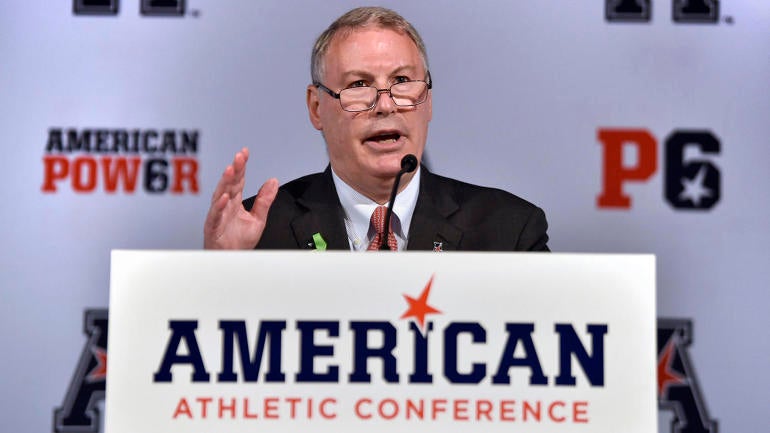
The inevitable became reality on Friday when the ACC announced that it will add Stanford, California and SMU to the conference beginning in 2024. The departures of Stanford and Cal leave the Pac-12 with just two remaining members: Oregon State and Washington State. With the AAC losing one of its more prominent members in SMU, it's been speculated the conference could look to replenish by adding the Beavers and Cougars. On Friday, however, shortly after the Mustangs' move was made official, AAC commissioner Mike Aresco released a public statement all but putting the possibility of adding the Pac-12 leftovers to bed.
"We have known that today's move was a possibility, which has allowed us time to investigate a number of options, including consideration of the larger group of institutions in the Pacific time zone. We have concluded, however, that the best way to proceed for our outstanding student-athletes is to not look westward," Aresco said. "Instead, we plan to focus any expansion efforts on schools that allow for sensible and sustainable competition and student-athlete well-being within our strong geographic footprint. We look forward to continued success as a leading FBS conference."
So, what will Oregon State and Washington State do moving forward? Their options are limited, but a merger with the Mountain West seems like the only viable option. Sources told CBS Sports' Dennis Dodd last week that Mountain West commissioner Gloria Nevarez has already pitched both schools, and that Aresco had planned to meet with them as well. The latter is clearly out of the equation based on Aresco's statement.
Oregon State and Washington State were already facing a massive decrease in annual revenue due to the Pac-12's sudden demise. The two schools were receiving approximately $37 million per season under the current deal, while Mountain West schools received around $6.6 million per school under its current media rights contract.
Of course, if the remaining Pac-12 schools and Mountain West essentially merge, the average annual revenue could change based on contract details.
If there is another realistic option, it is for the two schools to move forward as independent programs -- "realistic" being the operative word. Both would have to work out their own media rights deals much like Notre Dame has and BYU had prior to joining the Big 12. It's unlikely, however, that either of the remaining "Pac-2" have enough national appeal to surpass the revenue that Mountain West teams receive.
So, for now, Oregon State and Washington State are on an island in the Pacific Northwest, examining which is the best of some sub-optimal future options.
















